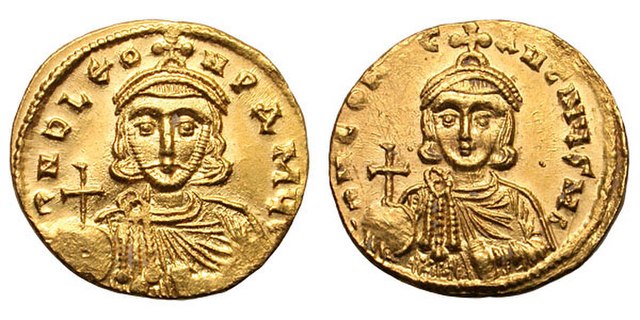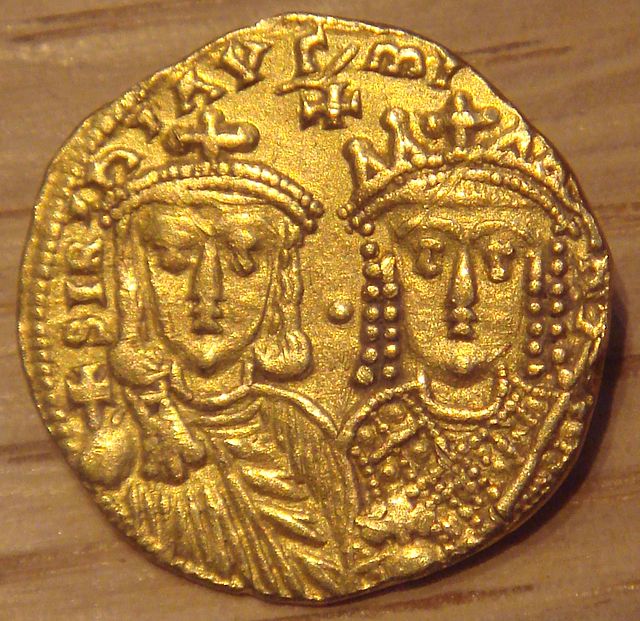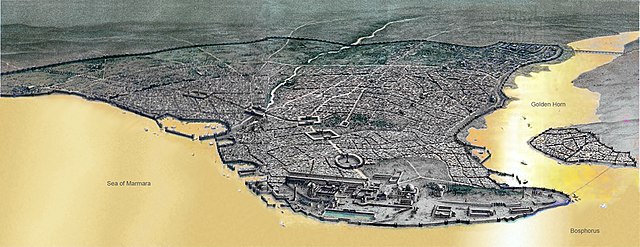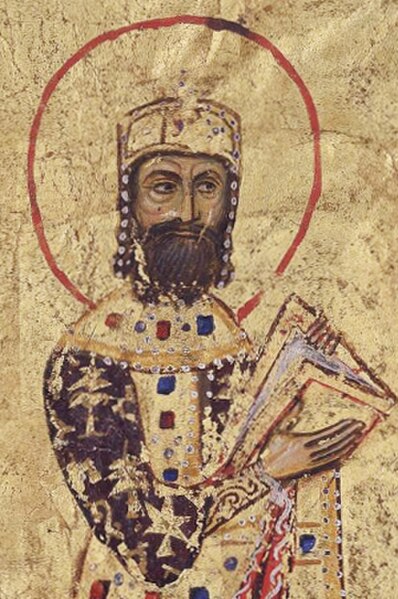Byzantine Empire under the Isaurian dynasty
The Byzantine Empire was ruled by the Isaurian dynasty from 717 to 802. The Isaurian emperors were successful in defending and consolidating the empire against the caliphates after the onslaught of the early Muslim conquests, but were less successful in Europe, where they suffered setbacks against the Bulgars, had to give up the Exarchate of Ravenna, and lost influence over Italy and the papacy to the growing power of the Franks.
Gold solidus of Leo III showing his son and heir, Constantine V
Folio from the 9th century iconophile Chludov Psalter, likening the iconoclasts, shown painting over an image of Christ, with the soldiers who crucified him
Gold solidus showing Irene alongside her son Constantine VI
The Byzantine Empire, also referred to as the Eastern Roman Empire, was the continuation of the Roman Empire centered in Constantinople during Late Antiquity and the Middle Ages. The eastern half of the Empire survived the conditions that caused the fall of the West in the 5th century AD, and continued to exist until the fall of Constantinople to the Ottoman Empire in 1453. During most of its existence, the empire remained the most powerful economic, cultural, and military force in the Mediterranean world. The term "Byzantine Empire" was only coined following the empire's demise; its citizens referred to the polity as the "Roman Empire" and to themselves as "Romans". Due to the imperial seat's move from Rome to Byzantium, the adoption of state Christianity, and the predominance of Greek instead of Latin, modern historians continue to make a distinction between the earlier Roman Empire and the later Byzantine Empire.

Gold solidus of Leo III (left), and his son and heir, Constantine V (right)
Constantinople was the largest and wealthiest city in Europe throughout late antiquity and most of the Middle Ages until the Fourth Crusade in 1204.
The seizure of Edessa (1031) by the Byzantines under George Maniakes and the counterattack by the Seljuk Turks
Alexios I, founder of the Komnenos dynasty






